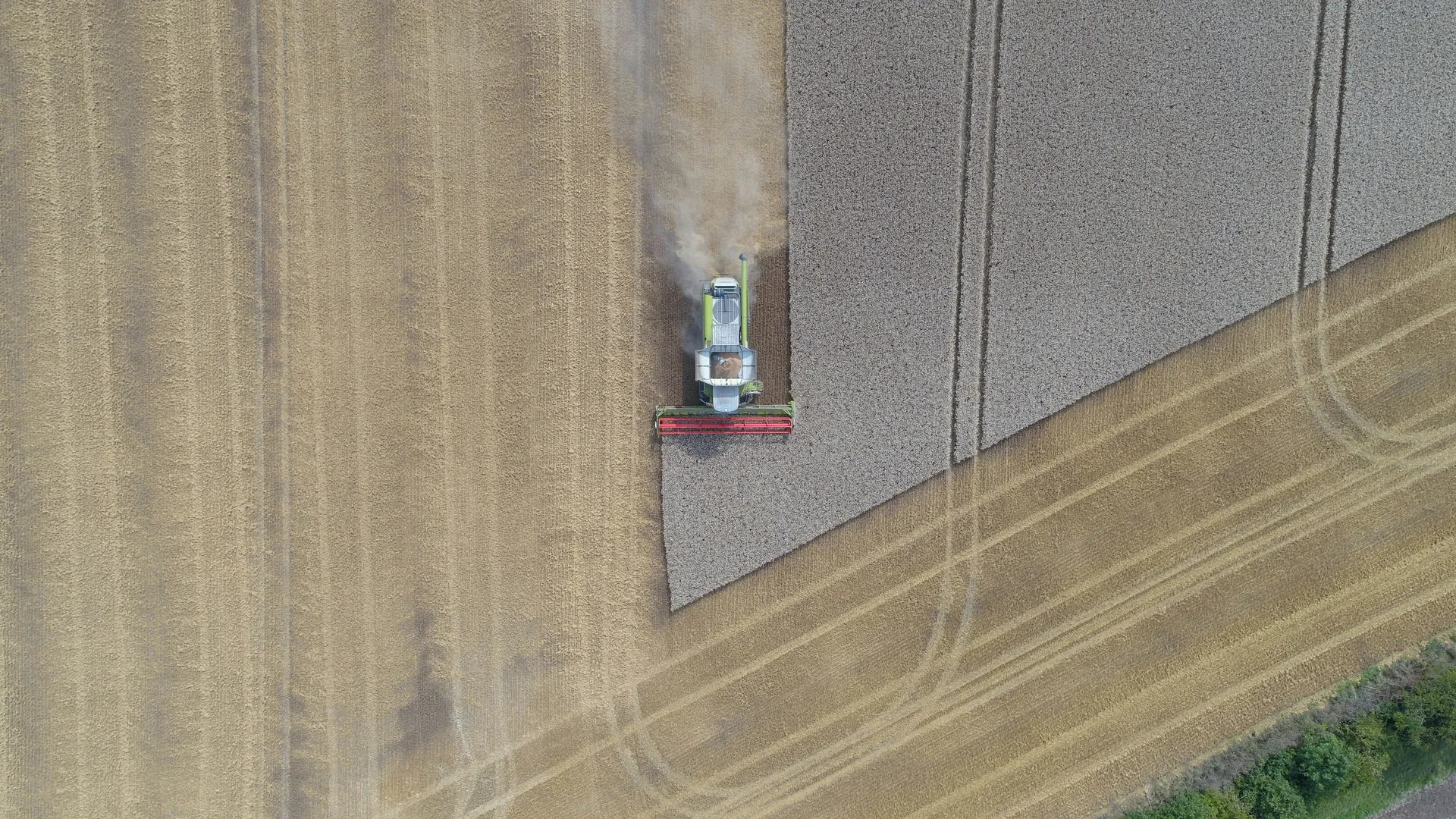Introduction: Entering the World of DeFi and Yield Farming
If you’re curious about earning passive income with your cryptocurrency holdings, you’ve likely come across the term “yield farming” in the world of decentralized finance (DeFi). Yield farming, also referred to as liquidity mining, is a method that allows crypto users to optimize their returns by providing liquidity to various DeFi protocols. Essentially, it involves depositing your crypto assets into liquidity pools on DeFi platforms. These pools facilitate the smooth functioning of decentralized exchanges (DEXs), lending platforms, and other financial services.
By participating as a liquidity provider, you can earn rewards in the form of additional tokens, interest, or a share of the transaction fees generated by the platform. This innovative strategy has transformed how crypto enthusiasts interact with DeFi projects, offering a profitable way to earn rewards while contributing to the governance and growth of these platforms.
Understanding Yield Farming

Definition and Core Concepts
Yield farming is a sophisticated strategy within the decentralized finance (DeFi) ecosystem that involves leveraging cryptocurrency assets to generate maximum returns. At its core, yield farming is about putting your crypto assets to work, rather than letting them sit idle in a wallet. This strategy typically involves staking or lending your assets on DeFi platforms to earn rewards, which can come in the form of interest, additional tokens, or a share of transaction fees.
One of the key aspects of yield farming is the concept of “stacking” yields. This means that yield farmers often combine multiple strategies to maximize their returns. For example, a farmer might lend tokens on one platform, then use the received interest-bearing tokens to provide liquidity in another pool, thereby earning multiple layers of rewards.
The Role of Liquidity Pools
Liquidity pools are an essential component of yield farming. These pools are essentially collections of tokens locked in smart contracts, which are used to facilitate trading on decentralized exchanges (DEXs) and other DeFi platforms. When you provide liquidity to a pool, you become a liquidity provider (LP) and are rewarded with a portion of the transaction fees generated by the trades executed within that pool. Additionally, many platforms offer extra incentives in the form of their native tokens, further increasing the potential returns for LPs.
Automated Market Makers (AMMs) play a significant role in managing these liquidity pools. AMMs use algorithms to adjust the prices of tokens within the pool based on supply and demand, ensuring that trades can be executed smoothly and efficiently. By participating in these pools, yield farmers not only earn fees but also contribute to the overall liquidity and stability of the DeFi ecosystem.
How Yield Farming Works: A Step-by-Step Guide

To get started with yield farming, you need to follow a series of steps that ensure you are well-prepared and understand the process thoroughly.
1. Create a digital wallet
The first step in yield farming is to set up a digital wallet that is compatible with the DeFi platform you intend to use. Popular wallet options include MetaMask, which is a browser extension, and Trust Wallet, a mobile application. These wallets support a wide range of cryptocurrencies, including Ethereum and other ERC-20 tokens, which are commonly used in DeFi transactions.
2. Buy cryptocurrency
Once you have your wallet set up, you need to acquire the cryptocurrency that you will use for yield farming. You can purchase these cryptocurrencies from centralized exchanges such as Coinbase or Binance. Commonly used cryptocurrencies for yield farming include Ethereum, USD Coin, and other ERC-20 tokens.
3. Select a yield farming platform
Choosing the right DeFi platform is essential for yield farming. You need to consider factors such as the security of the platform, the types of rewards offered, and the user experience. Popular platforms include Uniswap, Aave, Compound, and PancakeSwap. Each platform has its unique features and reward structures, so it’s important to research and select one that aligns with your goals and risk tolerance.
4. Deposit tokens into a pool
After selecting your platform, you need to deposit your tokens into a liquidity pool. This involves creating a pair of tokens (for example, ETH and USDT) and depositing them into the pool. Once your tokens are deposited, you will receive Liquidity Provider (LP) tokens, which represent your share of the pool. These LP tokens are used to claim your rewards and can be withdrawn later.
5. Manage or monitor your performance
It’s essential to keep an eye on your investments and the performance of the pool you are participating in. Yield farming is a dynamic field, and rewards can change frequently. You need to monitor the fees generated, the price movements of the tokens in your pool, and any changes in the reward structure. This helps you make informed decisions about whether to adjust your strategy or move your funds to a different pool.
6. Reinvest or withdraw rewards
Finally, you need to decide what to do with the rewards you earn. You can choose to reinvest your rewards to maximize your returns through compounding, or you can withdraw them. Some yield farmers use yield aggregators to automatically optimize their yield farming strategies by moving funds between different DeFi protocols to maximize returns. Others may prefer to manually manage their rewards and reinvest them in other high-yield opportunities.
Comparing Yield Farming with Staking: What’s the Difference?

When it comes to earning passive income in the decentralized finance (DeFi) space, two popular strategies often come into play: yield farming and staking. While both methods involve leveraging your cryptocurrency holdings to generate returns, they differ significantly in terms of their mechanisms, risks, and rewards.
Risk and Rewards
One of the most significant differences between yield farming and staking is the risk-reward profile. Yield farming offers higher potential rewards due to the exposure to liquidity provider fees and protocol-specific rewards. However, this comes with higher risks, including impermanent loss, smart contract vulnerabilities, and market volatility. In contrast, staking generally involves lower risks, as it supports network operations and provides more stable and predictable rewards.
Liquidity Requirements and Flexibility
Yield farming requires providing liquidity to liquidity pools, typically involving a pair of tokens. This allows for flexibility, as you can withdraw your tokens from the pool at any time, although this may incur impermanent loss if the market value of the deposited assets has changed significantly. On the other hand, staking involves locking up a single type of token in a designated wallet or smart contract for a specified period. This lock-up period can range from a few days to several weeks or even months, depending on the protocol, and during this time, the tokens are inaccessible.
Transaction Fees and Maintenance Costs
Transaction fees are another point of differentiation. Yield farmers often need to pay gas fees when switching between liquidity pools, which can be costly, especially on networks like Ethereum. In contrast, stakers do not incur these fees because they do not need to frequently move their assets. Instead, stakers earn a percentage of the network fees when they validate transactions, which reduces their maintenance costs.
Time Horizon and Investment Style
The time horizon and investment style also vary between the two strategies. Yield farming is often suited for short-term investments, as it allows for quick access to funds and the ability to move between different liquidity pools to optimize returns. Staking, however, is more aligned with long-term investments, as it requires locking up tokens for a specified period to support network security and validation. This lock-up period can provide more stable returns but limits liquidity in the short term.
Complexity and User Profile
The complexity of the strategies is another key difference. Staking is relatively simple and straightforward, involving the holding of digital assets in a wallet to support network operations. Yield farming, on the other hand, is more complex, requiring active management and the constant monitoring of market conditions to optimize yields. This makes staking more suitable for beginners or those seeking a passive, low-maintenance investment, while yield farming is better suited for more experienced investors with a high risk tolerance and the ability to actively manage their investments.
The Potential Risks and Benefits of Yield Farming
Risks to Consider
Yield farming, while offering the potential for high returns, is not without its risks. Here are some of the key risks that investors should be aware of:
One of the most significant risks is associated with smart contract vulnerabilities. Since yield farming relies heavily on smart contracts, any coding bugs or security loopholes can lead to substantial financial losses or even hacking incidents. Examples such as the Yam protocol and Harvest.Finance have shown how critical bugs can result in severe financial losses.
Impermanent loss is another risk that yield farmers face. When providing liquidity to automated market maker (AMM) protocols, users are exposed to price volatility risks that can result in temporary losses compared to simply holding the underlying assets. This occurs because the value of the tokens in the pool can fluctuate relative to each other, leading to a loss in the value of the deposited assets.
Market volatility is a major concern in yield farming. The decentralized finance (DeFi) ecosystem is characterized by its high volatility, with sudden and drastic changes in asset prices. A sudden drop in the value of a farmed token can lead to substantial losses or even liquidation for farmers who have borrowed against their holdings.
Scams and fraudulent schemes are also prevalent in the yield farming space. These schemes often operate under the guise of legitimate yield farming projects, luring investors with promises of astronomical profits. They can result in the loss of funds or even the complete disappearance of the project.
Liquidity risks and gas fees are additional considerations. Low liquidity in pools can lead to higher slippage, meaning users receive less than expected when selling their tokens. High gas fees, particularly on the Ethereum network, can also make yield farming unprofitable or even impossible for some users.
Regulatory risks should not be overlooked. The lack of clear regulations in the DeFi space can pose compliance risks for farmers and platforms. As regulators catch up with this emerging trend, they might introduce stringent regulations that could impact the profitability and viability of yield farming operations.
Benefits to Enjoy
Despite the risks, yield farming offers several compelling benefits that attract many investors:
High Potential Returns: Yield farming provides the opportunity to earn significantly higher returns compared to traditional investment avenues. Rewards can come in the form of interest, governance tokens, or a share of transaction fees, often resulting in annual percentage yields (APY) that can be quite attractive.
Passive Income: One of the primary benefits of yield farming is the ability to generate passive income. By depositing tokens into liquidity pools or lending them out, users can earn rewards without actively trading or managing their assets.
Diversification: Yield farming allows users to diversify their portfolio by participating in various liquidity pools and yield farming protocols across different blockchains. This diversification can help spread risk and maximize returns.
Innovation and Community Participation: Yield farming is at the forefront of the DeFi revolution, offering users the opportunity to contribute to the innovation and growth of the DeFi space. By providing feedback and support to developers and communities, users can be part of a dynamic and evolving ecosystem.
Governance and Incentives: Many yield farming protocols offer governance tokens as incentives, which can be staked or sold for further profit. These tokens also give users a say in the governance of the platform, allowing them to participate in decision-making processes.
Conclusion: Is Yield Farming Right for You?
Yield farming is a dynamic and rewarding strategy within the decentralized finance (DeFi) ecosystem, offering the potential for high returns through providing liquidity and participating in various DeFi protocols. However, it is important to remember that this strategy comes with significant risks, including smart contract vulnerabilities, market volatility, and impermanent loss.
To navigate yield farming successfully, it is essential to understand the mechanics, benefits, and risks involved. This includes selecting reliable platforms, monitoring market conditions, and actively managing your investments. The rewards can be substantial, including passive income, high potential returns, and the opportunity to contribute to the growth of the DeFi ecosystem.
If you are willing to learn, adapt, and manage the associated risks, yield farming can be a lucrative addition to your investment portfolio. Take the time to research, stay informed, and consider your risk tolerance before diving in. With the right approach, yield farming can be a powerful tool for maximizing your crypto returns and participating in the innovative world of DeFi.
FAQ
What are the main risks associated with yield farming, and how can they be mitigated?
The main risks associated with yield farming include:
- Volatility and market fluctuations: Sharp price swings can lead to substantial losses or liquidation.
- Smart contract vulnerabilities: Coding bugs or security loopholes can result in financial losses or hacking incidents.
- Impermanent loss: Price changes in liquidity pools can reduce the value of holdings compared to holding the underlying assets.
- Scams and rug pulls: Fraudulent schemes can result in the loss of funds.
- Liquidity risks: Low liquidity can cause higher slippage and losses.
To mitigate these risks:
- Use less volatile assets, such as stablecoins, for collateral and loans.
- Ensure smart contracts are audited and review audit reports.
- Stay informed about market conditions and adjust strategies accordingly.
- Conduct thorough research on projects and their governance structures.
- Monitor and adapt to changing conditions and strategies in the DeFi landscape.
How do I calculate the potential returns from yield farming, and what is the difference between APR and APY?
To calculate the potential returns from yield farming, you use two key metrics: APR (Annual Percentage Rate) and APY (Annual Percentage Yield).
- APR: Calculated as a simple interest rate without compounding. The formula is:
APR = (Annual Return / Investment) * 100%. For example, if you invest $1,500 at a 15% APR, your return after one year would be:$1,500 + ($1,500 * 0.15) = $1,725. - APY: Includes compound interest. The formula is:
APY = Invested Amount * {(1 + Rate / Number of Compounding Periods) ^ Number of Compounding Periods – 1}. For instance, a 15% APY compounded monthly would be calculated as:$1,500 * (1 + 0.15/12) ^ 12 - 1, resulting in a return of approximately$1,741.13after one year.
The main difference is that APR does not account for compound interest, while APY does, leading to higher returns when compounding is frequent.
What are some of the most popular DeFi protocols used for yield farming, and how do they differ from one another?
Popular DeFi protocols for yield farming include:
- Aave: A decentralized lending platform offering interest on deposits and borrowing options, with features like flash loans and credit delegation.
- Curve Finance: Specializes in stablecoin trading and liquidity provision, minimizing slippage and impermanent loss.
- Yearn Finance: Automates yield farming strategies across various DeFi platforms to maximize returns.
- SushiSwap: Offers yield farming and staking rewards, with additional features like lending and borrowing through Kashi.
- PancakeSwap: Provides yield farming on Binance Smart Chain with lower fees and faster transactions.
- Alpaca Finance: Enables leveraged yield farming on Binance Smart Chain, increasing potential returns.
Each protocol differs in its focus, such as lending, stablecoin trading, automated yield optimization, or leveraged farming, as well as the blockchain networks they operate on.
Can I participate in yield farming with any type of cryptocurrency, or are there specific requirements or tokens that are more commonly used?
You cannot participate in yield farming with just any type of cryptocurrency. Typically, yield farming involves depositing pairs of tokens, often including a stablecoin (like USDC or DAI) and another cryptocurrency (such as ETH, BNB, or a platform-specific token like UNI or CAKE).
The specific tokens required vary by the DeFi protocol and the liquidity pool you are participating in.


